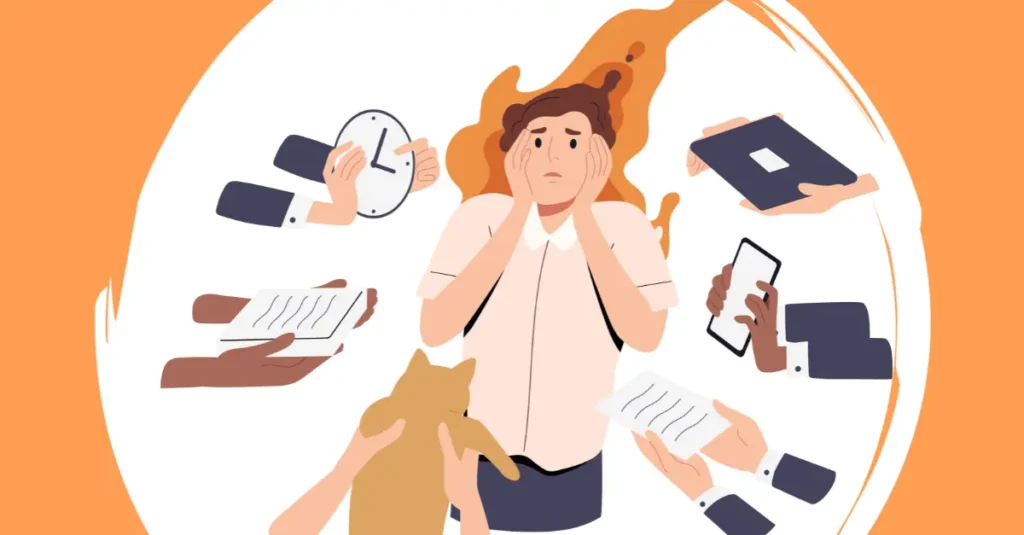Introduction
Mental health is not only an individual concern—it is a collective responsibility. While awareness campaigns and personal strategies are essential, lasting impact requires community-driven action. World Mental Health Day 2025 emphasizes that advocacy, social support, and accessible resources are vital in fostering resilient communities. Communities that prioritize mental health create environments where individuals feel safe, supported, and empowered to seek help without stigma (Campion, Bhui, & Bhugra, 2012).
Read More: Mental Health and Gen Z
Understanding Community Mental Health Resilience
Community resilience refers to the capacity of groups to withstand, adapt to, and recover from adversity, while maintaining social cohesion and individual well-being (Norris, Stevens, Pfefferbaum, Wyche, & Pfefferbaum, 2008). Mental health resilience specifically addresses psychological well-being, emphasizing both prevention and recovery.
Key Components of Community Mental Health Resilience
- Social cohesion: Strong, trusting networks among community members.
- Access to resources: Availability of counseling, helplines, support groups, and educational materials.
- Preparedness and planning: Systems in place to respond to crises effectively.
- Cultural competence: Mental health strategies that are sensitive to local values and beliefs.
- Empowerment: Opportunities for individuals to participate in decision-making and advocacy.
Communities that incorporate these elements are better equipped to respond to emergencies, reduce stigma, and support members facing mental health challenges.
The Role of Awareness and Advocacy
Awareness raises knowledge, reduces stigma, and encourages help-seeking behavior. Advocacy goes further by changing policies, creating supportive infrastructures, and promoting systemic access. Both are interdependent: awareness fosters empathy and understanding, while advocacy transforms these attitudes into tangible change (Corrigan & Watson, 2002).
Benefits of Community Advocacy
- Increased access to services: Advocates can help establish local clinics, helplines, and telehealth services.
- Policy influence: Communities can push for funding, inclusion of mental health in disaster response, and anti-stigma programs.
- Education and prevention: Awareness campaigns teach coping skills, emotional literacy, and resilience strategies.
- Cultural adaptation: Advocacy ensures that services reflect the needs and values of the community.

Six Effective Strategies to Build Community Mental Health Resilience
Some ways to build communities include:
1. Create Accessible Support Networks
Peer support groups, neighborhood check-ins, and online forums provide emotional outlets. Social connectedness is strongly associated with reduced stress, anxiety, and depression (Cohen, 2004).
Practical tip: Establish local or virtual support groups moderated by trained volunteers or mental health professionals.
2. Integrate Mental Health Services in Community Planning
Embedding mental health into community centers, schools, workplaces, and healthcare facilities ensures proactive and preventive support. Communities with integrated services respond faster during crises.
Practical tip: Partner with NGOs, health departments, and educational institutions to offer workshops, counseling, and crisis intervention.
3. Promote Public Awareness Campaigns
Educational campaigns normalize discussions about mental health, dismantle stigma, and inform residents about available resources. Media, social platforms, and local events are effective tools.
Practical tip: Organize community events, webinars, and social media campaigns highlighting coping skills and mental health literacy.
4. Train Community Members in Psychological First Aid (PFA)
PFA equips residents to provide immediate, empathetic support during emergencies without needing specialized mental health qualifications (WHO et al., 2011). Training volunteers strengthens both preparedness and trust within communities.
Practical tip: Offer workshops for teachers, community leaders, and volunteers to respond to trauma, grief, or distress.
5. Develop Crisis Response and Preparedness Plans
Community resilience is strengthened when systematic plans exist for emergencies, including mental health interventions. Coordination with local authorities, hospitals, and NGOs ensures rapid response.
Practical tip: Establish a clear protocol for mental health support during natural disasters, pandemics, or other emergencies.
6. Foster Inclusive and Empowering Environments
Empowerment involves giving community members a voice in decision-making, including youth, marginalized groups, and vulnerable populations. Inclusive participation enhances trust, engagement, and collective efficacy (Ungar, 2012).
Practical tip: Create advisory councils or committees where residents can share experiences, co-create programs, and influence policy.
Case Examples of Successful Community Mental Health Initiatives
-
“All Right?” Campaign, Christchurch, New Zealand: Following the 2011 earthquake, this initiative used media and community events to promote emotional resilience and recovery (O’Sullivan, 2016).
-
Psychological First Aid Training, Liberia Ebola Response: Volunteers were trained to provide mental health support during the epidemic, improving community coping and reducing stigma (Betancourt et al., 2016).
-
Peer Support Networks in Schools, Canada: Programs integrating student-led mental health initiatives reduced bullying, promoted empathy, and improved help-seeking behavior (Fleming et al., 2019).

These examples highlight that resilient communities are built not only through services but through engagement, empowerment, and shared responsibility.
Challenges and Barriers
-
Resource limitations: Financial, staffing, or infrastructural constraints may hinder initiatives.
-
Cultural resistance: Stigma and traditional beliefs can prevent utilization of mental health services.
-
Coordination difficulties: Fragmented efforts may reduce the effectiveness of programs.
-
Sustainability: Short-term projects without long-term planning fail to create lasting resilience.
Addressing these barriers requires collaborative planning, cross-sector partnerships, and continuous evaluation.
Moving from Awareness to Action
Raising awareness is just the first step. Communities must:
-
Translate knowledge into policies and programs.
-
Engage local leaders and stakeholders.
-
Monitor and adapt interventions based on feedback.
-
Promote mental health literacy alongside practical support.
When communities move beyond awareness to tangible action, mental health becomes a shared responsibility rather than an individual burden.
Conclusion
Community mental health resilience is essential for individual and collective well-being. Awareness alone is insufficient; advocacy, accessible services, empowerment, and preparedness are critical components. By implementing strategies such as support networks, integrated services, public campaigns, PFA training, crisis preparedness, and inclusive engagement, communities can create environments where mental health is protected, valued, and prioritized.
World Mental Health Day 2025 reminds us that building resilient communities is not optional—it is a collective investment in the well-being and future of every individual.
References
Betancourt, T. S., Meyers-Ohki, S., Charrow, A., & Hansen, N. (2016). Annual Research Review: Mental health and resilience in HIV/AIDS-affected children–a review of the literature and recommendations for future research. Journal of Child Psychology and Psychiatry, 54(4), 423–444. https://doi.org/10.1111/jcpp.12005
Campion, J., Bhui, K., & Bhugra, D. (2012). European Psychiatric Association (EPA) guidance on prevention of mental disorders. European Psychiatry, 27(2), 68–80. https://doi.org/10.1016/j.eurpsy.2011.11.006
Cohen, S. (2004). Social relationships and health. American Psychologist, 59(8), 676–684. https://doi.org/10.1037/0003-066X.59.8.676
Corrigan, P. W., & Watson, A. C. (2002). Understanding the impact of stigma on people with mental illness. World Psychiatry, 1(1), 16–20.
Fleming, T., Merry, S., Robinson, E., Denny, S., & Watson, P. (2019). Creating a mentally healthy school: A review of school-based mental health initiatives. International Journal of Mental Health Promotion, 21(1), 1–16. https://doi.org/10.1080/14623730.2018.1479180
Norris, F. H., Stevens, S. P., Pfefferbaum, B., Wyche, K. F., & Pfefferbaum, R. L. (2008). Community resilience as a metaphor, theory, set of capacities, and strategy for disaster readiness. American Journal of Community Psychology, 41(1-2), 127–150. https://doi.org/10.1007/s10464-007-9156-6
O’Sullivan, K. (2016). Evaluating the ‘All Right?’ campaign in Christchurch, New Zealand: Building community mental health resilience after disaster. Australasian Journal of Disaster and Trauma Studies, 20(1), 17–28.
Ungar, M. (2012). Social ecologies and their contribution to resilience. In M. Ungar (Ed.), The social ecology of resilience (pp. 13–31). Springer.
World Health Organization, War Trauma Foundation, & World Vision International. (2011). Psychological first aid: Guide for field workers. Geneva: WHO.
Subscribe to PsychUniverse
Get the latest updates and insights.
Join 3,027 other subscribers!
Niwlikar, B. A. (2025, October 11). Promote Mental Health and 6 Effective Ways Communities Can Support Well-Being. PsychUniverse. https://psychuniverse.com/mental-health-well-being/



